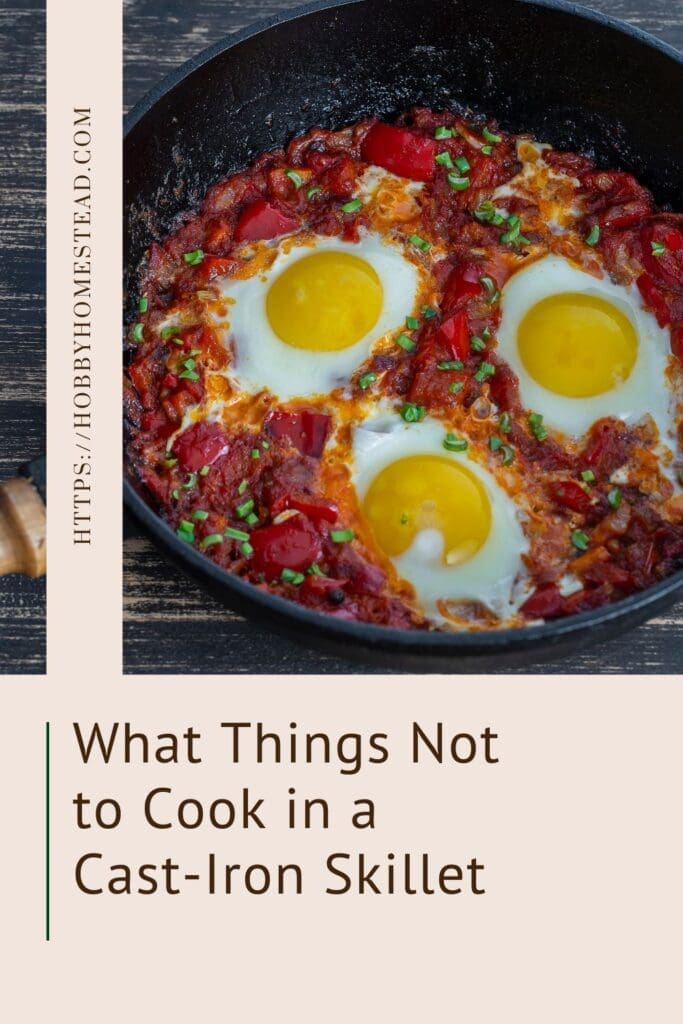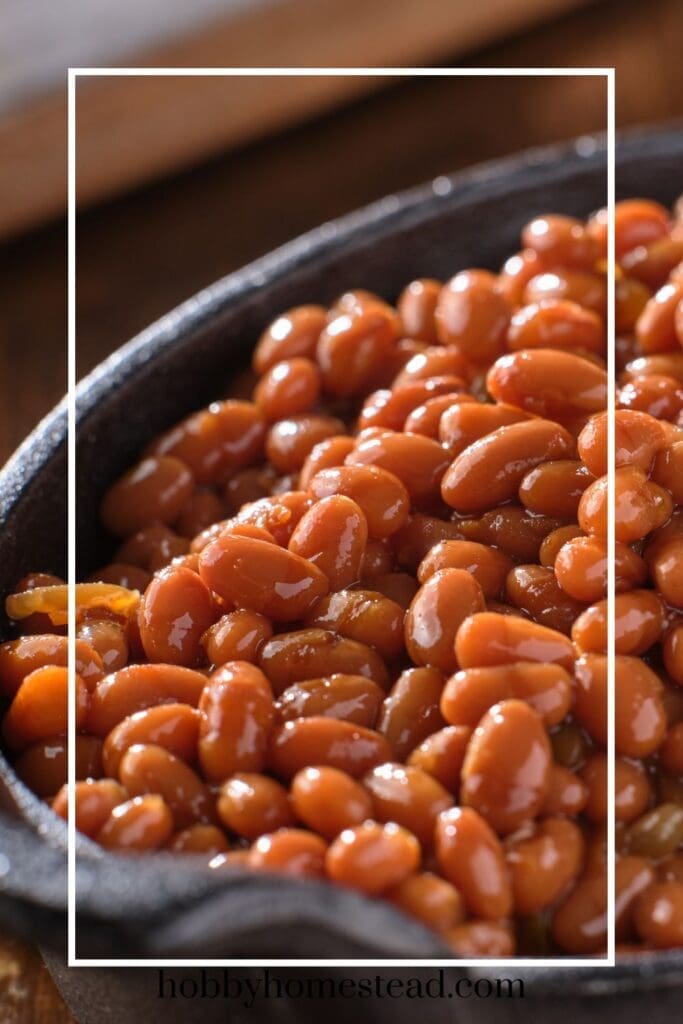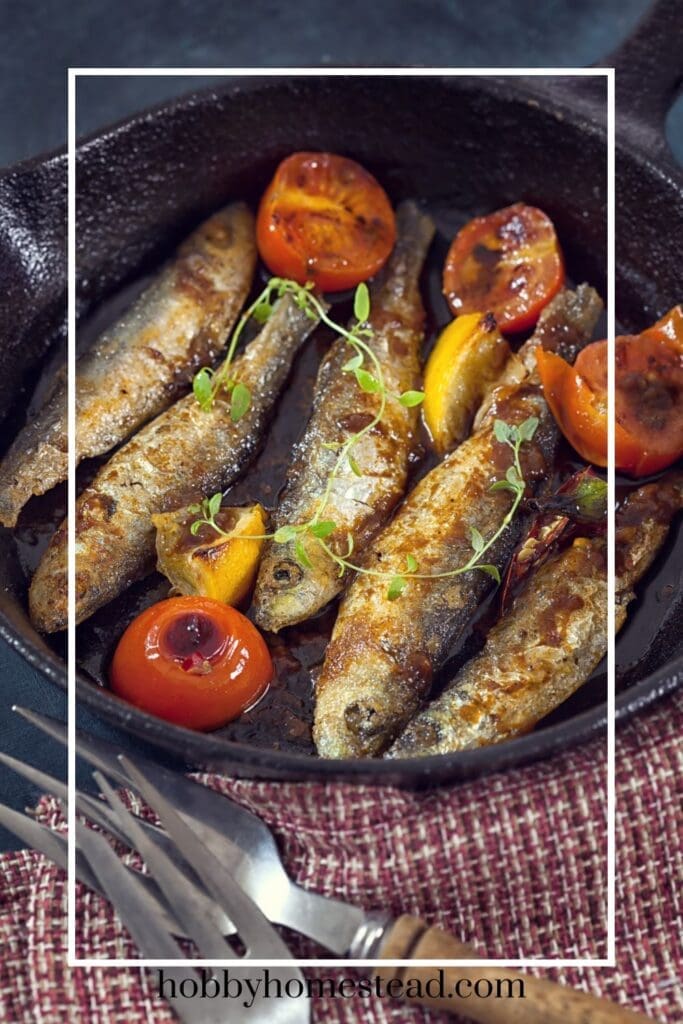Did you know that there are things you should not cook in a cast-iron Skillet. Cooking in this pan can be a fantastic way to achieve crispy, golden-brown edges and a hard sear on savory foods like fried chicken or thicker cuts of steak.
However, as versatile as cast iron pans are, there are certain foods that you should avoid cooking in them.
Growing up, we always had a few skillets on hand to use. Back in those days, we didn’t have any fancy non-stick frying pans to use. So, we used our iron pan for just about everything. I don’t recall anyone telling me what I should and shouldn’t cook in the skillet. All I know is how it was washed and dried. We just scrubbed it out with hot water and a stainless-steel scrubber. Then we placed it back on the stove on high heat until all the water had evaporated.
Over the years, I’ve purchased a few pans for myself. In all honesty, I have been guilty of using my cast iron for making scrambled eggs and other sticky sauces. The result is a rather sticky mess that is hard to clean up without soaking and elbow grease. Especially when the pan is newer. This caused me to research and find out more about things I might want to avoid cooking in my pan.
Here is what I found.

How Seasoning Affects What You Cook
The seasoning on a cast-iron skillet is a critical part of what makes these pans so versatile. Over time, as you cook with oil or fat, a thin layer of polymerized oil builds up on the surface of the pan, creating a non-stick coating that improves with each use. This “seasoning” not only helps prevent food from sticking but also adds flavor to your dishes. However, some foods can damage or strip this seasoning, so it’s important to know which foods to avoid and how to maintain the pan.
Why You Need to Protect Your Seasoning
Cooking acidic foods, such as tomatoes, wine-based sauces, or lemon juice, can weaken the seasoning over time. These foods can react with the iron in the skillet, causing the seasoning to break down, and sometimes even leave a metallic flavor in your food. It’s not a deal-breaker, but you’ll want to limit the exposure of your pan to such ingredients unless you’re prepared to re-season the skillet regularly.
Maintaining Your Seasoning
To counteract the wear and tear caused by acidic or sticky foods, try to cook high-fat items like bacon or steaks more often, which will help reinforce the seasoning. If you notice that food is starting to stick or that your pan is losing its non-stick properties, don’t panic. Simply wipe it down with a little vegetable oil or melted shortening after cleaning it. Bake it in the oven to help restore the seasoning. Regular maintenance will keep your cast iron in top shape.
8 Things Not to Cook in a Cast-Iron Skillet
Let’s break down the reasons why some ingredients don’t mix well with your trusty cast-iron pan and how to keep it in top shape for the best results.
1. Acidic Foods
While cast-iron cookware is durable, it doesn’t pair well with acidic ingredients like tomato sauce, lemon juice, or wine-based dishes. Acidic foods can strip away the thin layer of seasoning on your well-seasoned skillet, leaving your food with a metallic taste. A long-simmered tomato sauce or a wine-braised dish may taste great in a stainless steel or dutch oven, but it’s best to avoid these in your cast iron. Next time you’re making a sauce, reach for a different pot to keep that seasoning intact.
2. Delicate Fish
Though a cast-iron skillet is perfect for searing meats, it’s not an ideal choice for cooking delicate fish, like flaky white fish fillets. The high heat retention of cast iron, combined with its rough surface, can cause fish to stick, making it hard to flip without falling apart. If you want the best results for your seafood, opt for a non-stick pan instead. The smooth surface will allow the fish to cook evenly and slide off effortlessly.

3. Egg Dishes
Egg whites and scrambled eggs can be tricky in a cast-iron pan, especially if it’s a new skillet or if your pan isn’t perfectly seasoned. These sticky ingredients tend to cling to the pan’s surface, leaving behind bits of a mess and making cleanup difficult. A non-stick fry pan is a better tool for egg dishes as it provides a smooth surface for cooking, ensuring easy release and better results.
4. Sticky or Sugary Foods
Cooking foods with high sugar content, like caramel or sticky sauces, is not a good idea in your cast iron. The sugar can bond with the layers of seasoning, leaving a burnt residue that can be tough to remove, even with a good scrub and warm water. If you love making sauces, consider using a separate skillet to keep your cast iron in great condition.
5. Alkaline Foods
Alkaline foods, such as beans, can also cause problems for your cast-iron pan. The high pH levels in these foods can interact with the iron surface, breaking down the seasoning and leading to a metallic flavor. Next time you’re cooking beans, consider a stainless steel or ceramic pot to avoid damaging the pan.
6. Acidic Sauces and Marinades
Soy sauce, vinegar-based marinades, and other acidic sauces can strip away the seasoning on the surface of the pan. This isn’t just bad for your pan; it can also leave trace amounts of molecules in your food, which may create a health hazard. For marinating, your best bet is to use glass containers or stainless steel to protect both your food and your skillet.
7. Foods That Require a Lot of Liquid
Cooking foods that need a lot of water, like stews or braises, is better suited for a Dutch oven rather than a cast iron skillet. Cast-iron pans are excellent for high-temperature searing, but when you add too much liquid, the pan’s surface can lose its seasoning, and the liquid can turn metallic as it interacts with the iron. The next time you’re making soup or braised dishes, opt for thicker pans that are designed to handle more liquid.
8. Dishes That Need Constant Scrubbing
If a recipe requires a lot of scrubbing to remove stuck-on food, it’s better to avoid using your cast iron altogether. Steel wool and heavy-duty scrubbers can strip the seasoning off your pan, which means you’ll have to re-season it afterward. Delicate cleaning is the way to go, so if a dish leaves behind a lasting impression, consider using a non-stick or stainless-steel pan.
Tips for Maintaining Your Cast Iron
For home cooks who adore their cast iron, here’s the best way to keep your pan in top shape:
- Clean Gently: After cooking, let your skillet cool, then clean it with warm water and a bit of kosher salt to scrub off residue. Avoid using too much soap or steel wool, as this can strip the pan’s seasoning.
- Re-season Regularly: After each wash, dry your pan thoroughly and apply a thin layer of vegetable oil to the surface. This will help maintain the smooth surface and keep it well-seasoned for next time.
- Store Carefully: To avoid rusting, make sure your skillet is completely dry before storing. You can also layer fresh paper towels between the pan and its lid or other pans to protect the seasoning.

The Effect of Cooking with Oil and Fat
The type of oil or fat you use in your cast iron can make a significant difference in the success of your dish, as well as in the maintenance of the pan’s seasoning.
High-Smoke-Point Oils Are Best
Because cast iron heats up so thoroughly, oils with a high smoke point (like vegetable oil, avocado oil, or canola oil) are ideal for cooking at higher temperatures. These oils can withstand the heat without burning, making them great for searing meats or frying.
Avoid Low-Smoke-Point Fats
While butter adds amazing flavor to food, it has a lower smoke point and can burn easily when used in cast iron, especially at higher temperatures. If you want to use butter for flavor, try combining it with a little vegetable oil or adding it toward the end of the cooking process. This way, you avoid the sticky, burnt residues that can result from using only butter.
How Oil Impacts Seasoning
Every time you cook with oil in your cast-iron skillet, you’re helping to build up the layers of seasoning that give the pan its non-stick quality. This is why it’s recommended to use oils that help promote the seasoning process, like flaxseed oil or vegetable oil, after each use to protect and restore the surface.
Cast-iron pans are one of the best tools in the kitchen, but knowing their limitations ensures you’ll always get the best results. This research has helped us use our pans better.
Using Cast Iron on Different Heat Sources
One of the best things about cast-iron cookware is its versatility when it comes to heat sources. Whether you’re using a gas stove, an oven, a campfire, or even an induction cooktop, cast iron can handle it all.
On the Stovetop
Cast iron performs exceptionally well on both gas and electric stovetops. Because it retains heat so well, it’s perfect for frying, searing, and browning on the stove. However, if you’re using it on an electric stovetop, give it a little time to heat up evenly, as cast iron doesn’t respond as quickly to temperature changes as thinner pans do.
In the Oven
Cast iron transitions seamlessly from stovetop to oven, which makes it perfect for recipes that require browning first and then finishing in the oven, such as cornbread or braised meats. Its heat retention ensures an even cook, and its durability means you don’t have to worry about damaging it in high-temperature environments.
Over a Campfire
For outdoor cooking enthusiasts, cast iron is a campfire essential. Whether you’re making bacon and eggs over an open flame or slow-cooking a stew in a Dutch oven, cast iron can handle the direct heat of the fire with ease. Its durability makes it perfect for rugged environments, and it cleans up easily once you’re back indoors.
On an Induction Cooktop
Thanks to its magnetic properties, cast iron works exceptionally well on induction cooktops. Induction cooking heats up the entire pan quickly, and the even heat distribution of cast iron ensures that your food cooks consistently.
References
BGH.com. What Not to Cook in Cast Iron, A Top Chef Winner Weighs In.
Taste of Home. 4 Things You Should Never Cook in Cast Iron.


